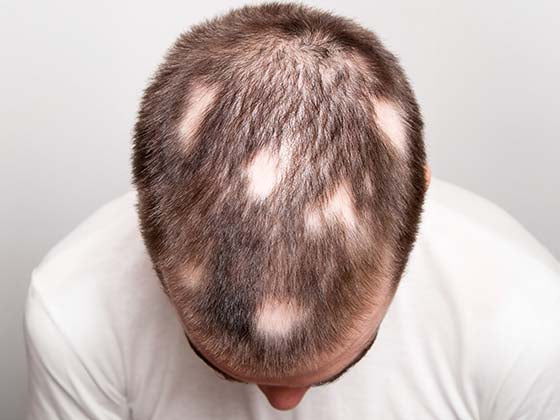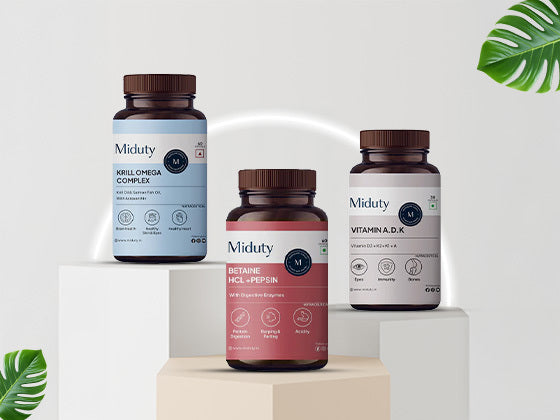In recent years, microplastics have received a lot of attention as a kind of pollution. These microscopic plastic particles, which are frequently less than 5 millimetres in size, have been discovered in a variety of settings, including oceans, rivers, and even the air. The cosmetics sector is one of the most serious sources of microplastic pollution. Microplastics are typically used in cosmetics as exfoliants, thickeners, or emulsifying agents. They can be found in items such as scrubs, toothpaste, lotions, and makeup. These particles are frequently too small for wastewater treatment plants to filter out, causing them to end up in bodies of water and wreaking havoc on aquatic ecosystems and species. When consumers use microplastic-containing goods, such as facial washes, the particles are rinsed down the drain and enter the environment. Once they are a part of the ecosystem, they have the capacity to concentrate and absorb dangerous chemicals from the surrounding water, which could then make their way into the aquatic species' food web. This can cause a chain reaction as the toxins migrate up the food chain, eventually affecting humans who consume seafood.
What Are Microbeads and Why Should We Be Concerned?

Microbeads are small plastic particles that are frequently used as exfoliants in personal care and cosmetic products like facial scrubs, body washes, toothpaste, and even some makeup. Polyethylene (PE), polypropylene (PP), polyethylene terephthalate (PET), polymethyl methacrylate (PMMA), and nylon are common materials used to make these particles. They are intended to remove dead skin cells and leave the skin feeling smoother. The environmental impact of microbeads is a source of worry. These little plastic particles are too small for wastewater treatment systems to efficiently filter out. As a result, they end up in rivers, lakes, seas, and other bodies of water. Because of their small size and buoyancy, they can float in the water for lengthy periods of time, possibly harming aquatic life and ecosystems. As a result of these concerns, numerous governments and regions have banned or restricted the use of microbeads in personal care products. The rising awareness of microbeads' environmental impact has resulted in increased efforts to identify alternative, biodegradable exfoliating agents and to encourage more sustainable practices in the cosmetics sector.
Understanding the Role of Microbeads in Cosmetics
Because of their exfoliating characteristics and capacity to improve product texture, microbeads have been utilised in cosmetics. They play an important function in personal care and cosmetic products, particularly those intended to cleanse and improve the appearance of the skin. Here's a closer look at how microbeads can help with exfoliating, texture enhancement, uniformity and consistency, ingredient distribution, and customizable products in cosmetics. However, the environmental impact of microbeads has raised concerns about their use in cosmetics. Their small size, resilience to degradation, and ability to absorb and transmit contaminants have generated concerns about their contribution to plastic pollution in aquatic ecosystems. As a result, numerous consumers, environmental organisations, and regulatory bodies have urged their elimination from cosmetic items.
The Hidden Environmental Cost of Microbeads
The hidden environmental cost of microbeads is a major topic that has gotten a lot of attention because of the negative impact these tiny plastic particles have on aquatic ecosystems and the wider environment. Water contamination, marine life ingestion, toxin absorption, influence on ecosystems, long-term persistence, bioaccumulation, and human health problems are some significant points that emphasise the hidden environmental cost of microbeads. Many governments have taken steps to ban or restrict the use of microbeads in personal care products in response to these environmental concerns. These restrictions aim to reduce the emission of microbeads into the environment and encourage the cosmetics industry to use more environmentally friendly alternatives. Additionally, some cosmetic companies have voluntarily stopped using microbeads in their formulations due to consumer awareness of the issue and demand for environmentally friendly products.
Microplastics and Their Impact on Marine Life

Microplastics, or minuscule plastic particles smaller than 5 millimetres in size, have a significant influence on marine life and ecosystems. These particles are formed as a result of a variety of events, including the breakdown of bigger plastic items, industrial processes, and microbeads in personal care products. Here are some of the ways microplastics damage marine life:
-
Ingestion: Marine animals occasionally mistake microplastics for food because of their small size and resemblance to plankton. Filter-feeding creatures such as mussels, clams, and some forms of zooplankton may consume microplastics unknowingly while filtering water for nutrition. Predatory animals that feed on smaller organisms indirectly absorb microplastics.
-
Bioaccumulation: Microplastics can accumulate within the bodies of marine animals over time, a process known as bioaccumulation. The microplastics are concentrated as larger organisms consume smaller ones. This can result in high levels of microplastics in the tissues of top predators, which can have serious health consequences.
-
Physical Harm: Microplastics can physically harm marine species' digestive tracts. Microplastics in the digestive tract can induce obstructions, inflammation, and delayed food absorption, leading to malnutrition and decreased fitness.
-
Toxin Transport: Microplastics can absorb and concentrate pollutants in the environment's water, including persistent organic pollutants and heavy metals. When marine creatures consume microplastics containing these contaminants, they may be exposed to high quantities of chemicals linked to a variety of health problems.
-
Hormonal Disruption: Certain microplastics may behave as endocrine disruptors, interfering with the hormonal systems of marine animals, according to research. This disruption has the potential to affect reproductive success, development, and behavior.
-
Disruption of Feeding Behaviors: Microplastics have the potential to affect the eating habits of marine species. Some research suggests that fish exposed to microplastics may prefer to consume plastic over natural prey, resulting in nutritional deficits.
-
Spread of Pathogens: Pathogens can attach to and travel on microplastic surfaces. This could hasten the spread of hazardous microorganisms, endangering the health of marine creatures and ecosystems.
-
Ecosystem Impact: Microplastic deposition in marine habitats can disrupt food chains and change community dynamics. Changes in species interactions and population levels can have a domino effect on the entire marine ecosystem.
-
Sediment Contamination: Microplastics can also settle to the ocean floor, where they can contaminate sediments and benthic habitats. This contamination can impair the behaviors and functions of species living in or near sediments.
How Microplastics Enter the Oceans
Microplastics enter the environment via a variety of direct and indirect pathways influenced by both human activity and natural processes. Plastic particles as small as 5 millimetres in size have become a major environmental hazard. Plastic waste and litter, rivers, and streams, wastewater treatment plant effluents, marine debris and degradation, synthetic fibre shedding, runoff and rainwater, atmospheric deposition, shipping and boating, and natural breakdown are some of the ways microplastics get into the oceans. Given the multiple routes through which microplastics enter the oceans, tackling this issue will necessitate a multidimensional approach. Reduced plastic manufacturing, improved waste management, and recycling practices, creating goods with fewer microplastics, establishing effective wastewater treatment methods, and raising knowledge about the environmental effects of microplastics on marine ecosystems should be prioritised.
The Harmful Effects on Aquatic Ecosystems
Microplastics have a wide range of negative consequences for aquatic ecosystems, affecting anything from marine species at the smallest scales to entire ecosystems at larger scales. These microscopic plastic particles, which are frequently invisible to the naked eye, have the potential to upset the delicate balance of aquatic life and ecosystems. Ingestion, bioaccumulation, toxin transmission, changed behavior, habitat alteration, disruption of ecosystem services, species interactions, genetic and evolutionary influence, microbiological interactions, and economic impact are some of the primary detrimental consequences of microplastics on aquatic ecosystems. To address the negative consequences of microplastics on aquatic ecosystems, scientists, policymakers, industry practises, and the general public must work together. Reduced plastic production and use, improved waste management, the implementation of plastic use rules, and the shift to more sustainable materials and practices are all strategies for mitigating these effects.
Regulations and Industry Response to Microbead Pollution
Regulations and industry responses to microbead contamination have gained traction as public awareness of the environmental impact of microplastics on aquatic ecosystems has grown. Bans, limitations, and voluntary initiatives have been implemented in a number of countries and regions to address this issue. Furthermore, the cosmetics business has been modifying its practices to fit with sustainable objectives. Here are some examples of industry and regulatory actions:
-
United States: The Microbead-Free Waters Act, passed in 2015, makes it illegal to manufacture and sell rinse-off cosmetics containing plastic microbeads. This act marked a big step forward in the fight against microbead contamination.
-
European Union: The European Chemicals Agency (ECHA) has suggested limits on microplastics intentionally added to consumer and professional items such as cosmetics, detergents, and cleaning products. This idea is part of a larger EU initiative to prevent microplastic pollution.
-
Canada: Canada has made efforts to prohibit the manufacture, importation, and sale of microbead-containing toiletries, which went into force in 2018.
-
Australia: Some Australian jurisdictions have banned the sale and manufacture of microbead-containing personal care products.
-
Phasing Out Microbeads: Many cosmetic businesses have made a voluntary commitment to remove microbeads from their products. Consumer demand for ecologically friendly items and a desire to associate with sustainability programmes typically motivate this response.
-
Alternatives Being Researched: The cosmetics industry has done extensive research on and adopted natural exfoliants like fruit seeds, nuts, and biodegradable particles as substitutes for microbeads.
-
Labeling and Transparency: Some businesses are using clear labeling to alert customers about the lack of microbeads in their products. This enables customers to make better-informed decisions.
-
Collaborative Initiatives: Industry associations, non-governmental organisations (NGOs), and governments have worked together to develop guidelines and best practices for reducing microbead pollution. These initiatives seek to promote sustainable practices throughout the industry.
-
Research and Innovation: Organisations are spending money on these areas to create new formulations that achieve desired cosmetic results without the use of microbeads.
-
Consumer Education: Some companies are engaging in consumer education campaigns to raise awareness about microplastic pollution and the importance of using products that are environmentally responsible.
Legislation Against Microbeads: A Global Overview
Microbead legislation varies around the world, with various countries and areas taking action to mitigate the environmental impact of these microscopic plastic particles. The following is a global overview of some significant legislative acts taken against microbeads in the United States, European Union, Canada, United Kingdom, Australia, New Zealand, South Korea, Taiwan, Japan, Norway, India, and Other Countries. It's worth noting that rules and activities against microbeads are evolving as governments and industries become more aware of their environmental consequences. These legislative efforts are part of an international effort to limit microplastic contamination and its impact on aquatic ecosystems.
Beauty Industry's Shift Towards Sustainable Alternatives

In response to customer demand for ecologically friendly products and growing worries about plastic waste, the beauty industry has undergone a dramatic shift towards more sustainable alternatives. This transformation affects many facets of product creation, packaging, and overall company practices. Here's a quick rundown of how the beauty business is adopting sustainability:
-
Alternatives to microbeads: Many companies have abandoned microbeads in their formulations in favor of natural exfoliants such as crushed fruit pits, seeds, and nut shells. These alternatives offer effective exfoliation while reducing microplastic pollution.
-
Biodegradable Ingredients: Brands are looking into biodegradable substances that degrade more easily in the environment. These elements are a more environmentally friendly alternative to typical materials that can last for decades.
-
Packaging Innovation: Companies are attempting to reduce packaging waste by using less plastic, using recycled materials, and designing recyclable packaging. Some businesses are even looking into compostable or reusable packaging options.
-
Refillable and Reusable Products: Refillable and reusable packaging concepts are gaining popularity, allowing customers to buy refills of their favorite products in minimum packaging, decreasing plastic waste.
-
Plant-Based and Natural Ingredients: Plant-based and natural components are increasingly being used to create cleaner, safer, and more sustainable cosmetic products. When compared to their synthetic counterparts, these substances frequently have lower environmental implications.
-
Certifications and Labels: Brands are seeking certifications such as "cruelty-free," "vegan," and "organic" to demonstrate their commitment to ethical and sustainable practices. These labels assist consumers in making educated decisions.
-
Sustainable Sourcing: To reduce environmental impact and promote local communities, brands are increasingly procuring materials sustainably. Fair trading and environmentally responsible harvesting are examples of such practices.
-
Reducing Water Usage: Water consumption in product formulations and manufacturing processes is being reduced in the beauty sector. Water-saving formulations and practices aid in the conservation of this valuable resource.
-
Carbon Footprint Reduction: Some businesses are attempting to minimise their carbon footprint by utilising renewable energy, improving transportation efficiency, and introducing sustainable practices throughout their supply chain.
-
Educational Campaigns: Beauty companies are implementing educational initiatives to raise awareness about environmentally friendly practices, plastic litter, and the environmental impact of beauty products.
-
Research and Development: Investment in R&D leads to innovative solutions that balance product effectiveness with environmental responsibility.
-
Consumer Engagement: Brands are engaging customers through transparency initiatives, such as sharing information about ingredient sourcing, manufacturing processes, and environmental initiatives.
Empowering Consumers: Identifying and Avoiding Microbead Products

Educating consumers on how to identify and avoid microbead items is a critical step towards minimising microplastic contamination. Consumers can help increase demand for more sustainable and ecologically friendly beauty products by making informed decisions. Reading ingredient lists, checking labels, researching brands, using apps and databases, choosing natural exfoliants, supporting responsible brands, reading product reviews, educating yourself, spreading awareness, supporting bans and regulations, DIY beauty products, and questioning brands are all ways to identify and avoid microbead products. Remember that tiny, intentional choices made by individual customers can lead to substantial, beneficial changes in the long run. By avoiding microbead-containing items and supporting sustainable brands, you may help reduce microplastic pollution and promote a healthier environment.
Decoding Labels: Spotting Microbeads in Your Cosmetics
Understanding the terminology used in ingredient lists is necessary for decoding labels to detect microbeads in cosmetics. Here's a guide to identifying products that might contain microplastics:
- Check for Common Microplastics: Look for ingredients that are frequently used as microplastics in cosmetics, such as:
-
Polyethylene (PE)
-
Polypropylene (PP)
-
Polyethylene terephthalate (PET)
-
Polymethyl methacrylate (PMMA)
-
Nylon (Nylon-6, Nylon-12)
-
Look for Clues in Product Descriptions: Product descriptions may include terms such as "exfoliating," "scrub," or "polish," which may indicate the presence of microbeads.
-
Avoid Synthetic Exfoliants: Be wary of products that advertise "microbeads" or "exfoliating beads" without specifying the material. If the ingredients list does not clearly state that they are natural, they may contain microplastics.
-
Investigate Brand Claims: Brands that are dedicated to sustainability and the avoidance of microplastics may highlight this on their packaging or website. Look for terms like "microbead-free," "microplastic-free," or "eco-friendly exfoliation."
-
Learn Synonyms: Become acquainted with microplastics synonyms. Microbeads may be indicated by terms such as "microspheres," "microgranules," or "micro-exfoliating particles."
-
Look for Alternatives: Look for exfoliants made from natural ingredients such as "ground walnut shells," "apricot kernel powder," "oatmeal," "sugar," "salt," or "bamboo powder." These are more likely to be long-term solutions.
-
Avoid Vague Terminology: Be cautious of vague terms like "plastic polymers" or "synthetic polymers" in the ingredient list, as these might include microplastics.
-
Use online resources: You can search for specific products and determine whether they contain microbeads using databases or mobile apps provided by some businesses and websites.
-
Contact the Brand: If you have questions about a product's ingredients, contact the brand's customer service.
-
Choose Certified Products: Look for labels such as "cruelty-free," "vegan," and "organic." These certifications frequently demonstrate a company's dedication to ethical and sustainable practices.
Keep in mind that consumer education and informed choices drive positive change. You can help reduce the demand for microplastics in cosmetics and contribute to a more environmentally responsible beauty industry by carefully reading product labels and selecting products that align with your values.
Eco-Friendly Alternatives to Microbead-Containing Products
There are a plethora of eco-friendly alternatives to microbead-containing products that provide good exfoliation and washing without adding to microplastic contamination. These solutions are safer for the environment because they employ natural and biodegradable chemicals. Consider the following options:
-
Natural Exfoliants:
-
Fruit Seeds: Ground fruit seeds, such as strawberry or raspberry seeds, provide gentle exfoliation and are biodegradable.
-
Nut Shells: Crushed walnut, almond, or coconut shells exfoliate effectively while being environmentally friendly.
-
Oatmeal: Oatmeal is soothing and exfoliating, making it ideal for sensitive skin.
-
Coffee grounds: Used coffee grounds are not only environmentally friendly, but they may also have antioxidant properties.
-
Natural Fibers:
-
Konjac Sponges: These sponges are made from the root of the konjac plant and provide gentle exfoliation while cleansing the skin.
-
Mineral Exfoliants:
-
Clays: Kaolin clay and bentonite clay, when combined with water or other liquids, can be used to make a gentle exfoliating paste that also detoxifies the skin.
-
Granulated Sugar or Salt:
-
Make your own scrub by dissolving granulated sugar or salt in a carrier oil or mixing it with a gentle cleanser.
-
Baking Soda:
-
Baking soda, when combined with water or a mild cleanser, creates a paste that can be used for gentle exfoliation.
-
Natural Brushes or Loofahs:
-
Natural brushes and loofahs provide physical exfoliation without the use of microplastic-based products.
-
Chemical Exfoliants:
-
Chemical exfoliants such as alpha hydroxy acids (AHAs) and beta hydroxy acids (BHAs) can aid in the removal of dead skin cells without the use of physical scrubbing.
-
DIY Recipes:
-
Many of the above-mentioned natural exfoliants can be combined with carrier oils, honey, yoghurt, or other natural ingredients to create effective homemade exfoliating treatments.
-
Sustainable Brands:
-
Look for companies that have pledged to use only natural and biodegradable exfoliants in their products.
Consider your skin type and sensitivity when looking for eco-friendly options. Some natural exfoliants may be softer than others, so select the best match for your skincare needs. By selecting products and practices that prioritise sustainability and prevent microplastics, you help to create a healthier environment and contribute to the shift towards more responsible beauty practices.
The Future of Cosmetics: Towards a Plastic-Free Beauty Industry

Consumer demand, environmental concerns, and governmental initiatives are driving the cosmetics industry's future toward a more sustainable and plastic-free approach. As the harmful effects of plastic pollution become increasingly apparent, both consumers and businesses are taking steps to minimise their use of plastic and embrace more responsible practices. Reduced plastic packaging, refillable and reusable packaging, biodegradable materials, waterless formulations, solid and concentrated products, sustainable sourcing, natural and biodegradable ingredients, regulations and bans, consumer awareness and education, investment in research and innovation, partnerships and collaborations, and circular economy models are some of the ways the cosmetics industry is moving towards a plastic-free future. The shift to a plastic-free beauty sector is a complicated process that requires collaboration from a wide range of stakeholders, including consumers, brands, suppliers, and governments. As sustainability becomes a core value in the beauty business, it is expected that the industry will continue to grow towards more responsible practices that prioritise both customer well-being and the health of the world.









































